Binding by Machine
By Terry White
This is my method for binding a quilt by machine. I’ve used this method for about 15 years. I figure, if the whole quilt is made with the machine, why should I spend hours hand stitching the binding to the back of the quilt? My hands can’t deal with it, either! This technique is great for most quilts, clothing and quilted accessories…if, however, you are putting your quilt in certain competitions, you may want to use a more traditional method.
After I quilt a quilt, I trim the edges of my quilt and then use a ¼ inch zigzag stitch all around the edges of the quilt. This draws in the edge of the quilt so there are no puckers when the binding is attached. In this case, my friend Pam Mayo quilted my quilt on her big machine. She basted around the quilt, so I didn’t have to zigzag. Yay!
Cut binding fabric into strips 2 1/8” wide. Cut the fabric on the cross of the grain, which is across the 45 inch width of the fabric. The cross of the grain has some “give” which is a slight elastic quality, but not so much as the bias of the fabric. I like to use the cross grain because bias makes a very stretchy wavy binding and not necessary for a straight edged quilt. (Bias binding is good for scalloped edge quilts)Cut enough so that you can have at about 12 inches more than the length required to bind your quilt.
Join the fabric strips to make the length required to finish the quilt. The strips should be joined at a 45 degree angle.
This spreads out the seam allowance so there isn’t a big bulge in the binding at the seams.
The first three photos illustrate the set up to join fabric strips with a 45 degree angle. Fold and finger press the corner down on the second strip, set it on top of the first strip and stitch on the pressed line.
Use the center needle position and guide it right on the pressed line. Use the same needle, thread and stitching that you would when piecing a quilt. Cut the seam allowance to ¼ inch.
This is what the angled seam looks like. The next photo shows the pressing. You can press the seam open or to one side. This quilt is a “picnic quilt” and I want a sturdy seam, so I pressed the seams together to one side. I use a cardboard tube to roll my binding…it keeps it nice and neat.
I fold the binding as I go along stitching. This gives me great control. The pin is where I will start stitching. I placed the pin about 12 inches down from a corner of the quilt. I will start stitching where the pin is. I will need the extra binding and 12 inches of room to join the binding strips at the end.
Fold binding in half along the length and stitch to the back of the quilt using a straight stitch with 3 ½ stitch length and a ¼” seam allowance. My machine has lots of needle positions. I like to position the needle at the inside edge of the presser foot. This way the quilt can be moved by both feed teeth on the machine. I can also use a guide on the stitch plate to keep my seam consistent. It makes it easier to stitch. Use a 90/14 machine embroidery needle…this strong needle is required…a smaller needle will bend or break.
Miter the edges of the binding. I like to use a mitered edge and many quilters do. It makes a nice flat corner and it is surprisingly easy with a little practice. The following 5 photos show the simple steps to miter the corner of a quilt. I think the photos teach much better than words how to fold the edges to make the miter and finger press to give you a good 45 degree angle.
The photo above illustrates the point to stitch to, which is ¼ inch from the end. The next photo shows to turn the quilt, flip the corner and begin stitching ¼ inch from the corner.
Here is the quilt back mitered edge when folded to the front of the quilt.
Most of the binding is stitched to the quilt back. Here is where the extra binding makes joining the ends much easier. Leave about ten inches unstitched.
Cut a 45 degree angle on one of the binding ends. Cut it with about four inches of fabric from the end of the stitching. Fold this end and tuck it into the other end. Make a mark ½ inch in from the angled cut. Make another mark on the other edge of the binding strip.
You will have the edges overlapping ½ inch. This is so that you can stitch ¼ inch angled seam at the ends of the binding.
Sew the ends of the binding with right sides together.
Here is the last angled seam stretched out and the last stitching is finished.
Choose a big blanket stitch with open side of the stitches towards outside of quilt.
I like to use a thread that compliments the binding. This is one extra decorative touch to your quilt. I use the same thread in the top and the bobbin.
Fold binding to the front. Fold it over as you stitch around the quilt. Notice that the needle is positioned right on the edge of the binding.
Here is a section of the stitched binding.
Here is how to fold the mitered edge before stitching.
Here is the stitched mitered edge.
Let us know your techniques on Quilt Binding
Click here to read more techniques by Terry White



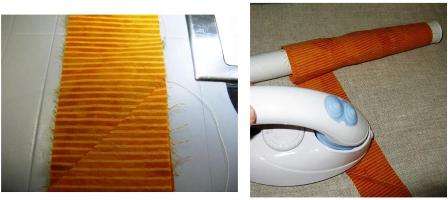
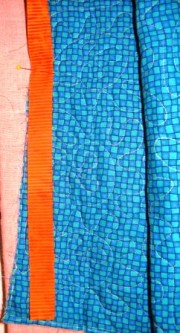


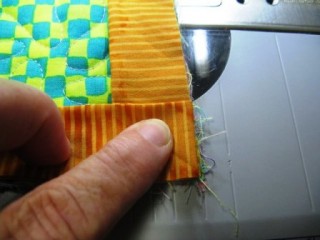
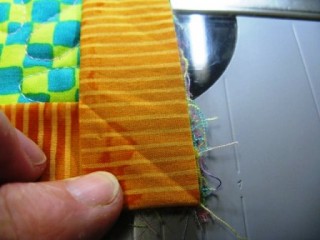
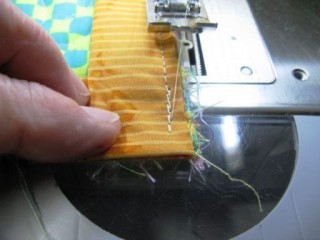
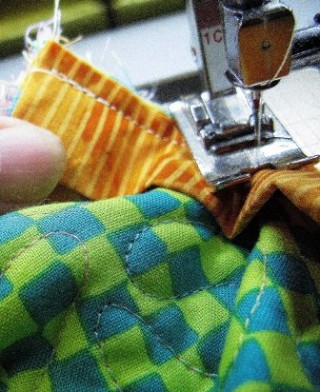
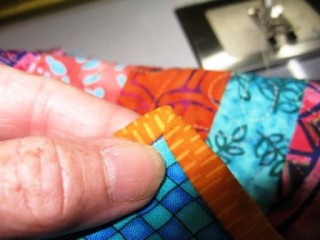


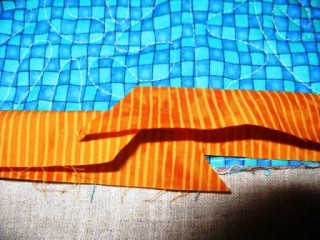
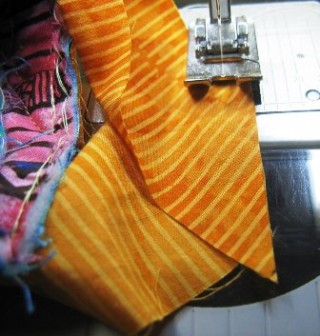
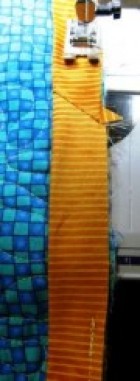
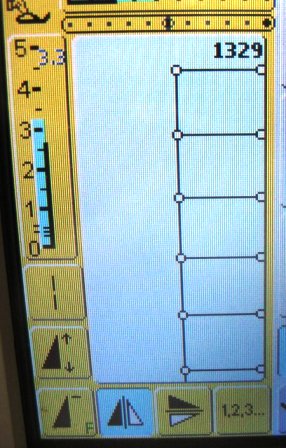
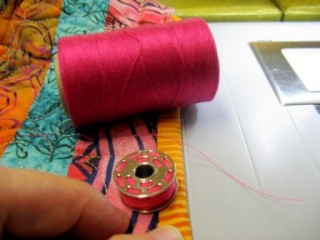




Pingback: Quilt Binding: 5 Mistakes to Avoid | Havel's Sewing